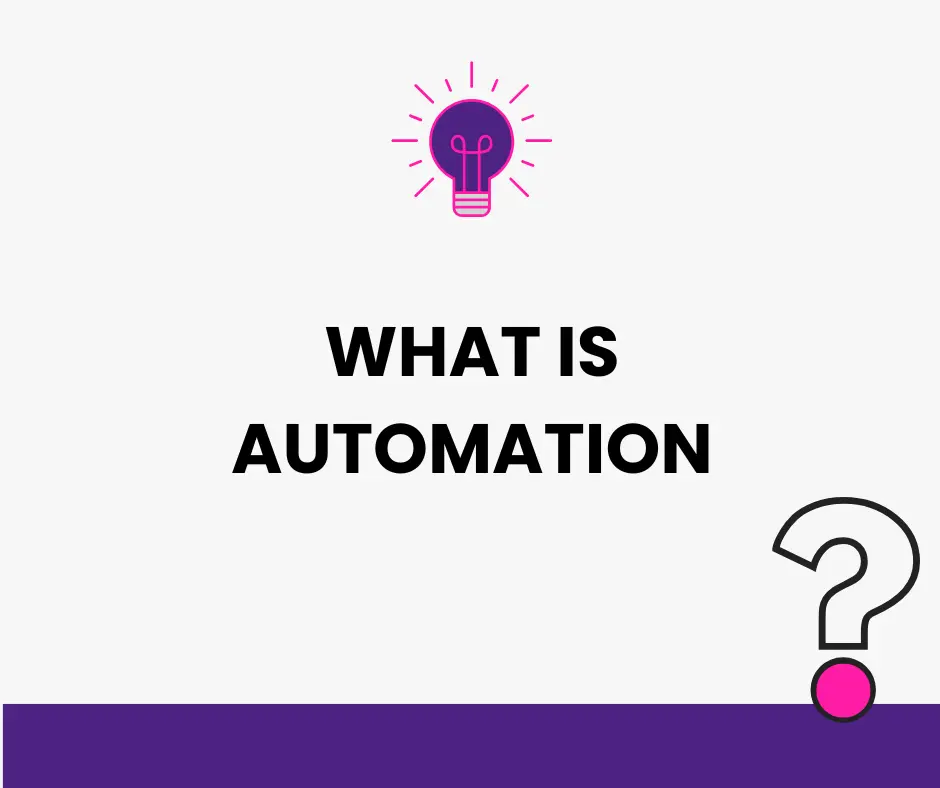What Is Automation and Why Is It Important?

29. 6. 2025
ATWEL specialist
Categories: email marketing, Online marketing, online store, Website Development, WordPress website management
Automation has evolved from a futuristic concept to a business imperative. Companies that effectively leverage automation gain significant competitive advantages—from reduced operational costs to enhanced customer experiences. But what exactly is automation in today’s context, and how can your business harness its full potential? This guide provides actionable insights for business leaders considering automation strategies.
Defining Automation in Business Context
Automation is the strategic deployment of technology to execute tasks with minimal human intervention. It encompasses self-operating systems designed to handle repetitive, rule-based processes that traditionally required manual effort. Modern automation combines sophisticated algorithms, artificial intelligence, and machine learning to deliver increasingly complex capabilities.
The core value proposition centers on resource optimization and strategic reallocation. By automating routine tasks, businesses free their teams to focus on high-value activities that drive innovation and growth—strategic planning, creative problem-solving, and relationship building that machines cannot replicate.

Real-World Application
Consider the widespread adoption of intelligent chatbots in e-commerce. These systems handle initial customer inquiries, process routine orders, and qualify leads 24/7. Advanced implementations extend beyond customer service to include:
- Automated email campaign management
- Calendar coordination and meeting scheduling
- Document processing and data entry
- Inventory management and reordering
- Financial reporting and invoice processing
The importance of automation: history and future
The history of automation is tied to work efficiency, robotics, and simplifying manufacturing processes. Production automation and the deployment of robots across industries have reduced staffing requirements and shortened the time needed to make a given product.
In practice, the human factor gradually began to be replaced by machines. On the other hand, industrial automation created space for entirely new roles —technicians who maintain the machines, and programmers or engineers responsible for designing the machines and their software.
Since its inception, automation has highlighted the added value of humans—specifically our capacity for critical and logical thinking, which even artificial intelligence cannot yet fully replace.
It later became clear that beyond industrial (hardware) automation, these approaches can also be applied to software — for example, automated email campaigns or more efficient analytics. Today, automation streamlines not only production but also everyday administrative tasks.
From the very beginning, automation has faced criticism related to job losses. As noted above, however, reductions primarily affect positions that machines can replace. In the future, integrating automation will increase the premium on human creativity, self-development, and intellect — raising literacy and living standards worldwide.
The Evolution of Automation: From Factory Floors to Cloud Platforms
Historical Perspective
Industrial automation revolutionized manufacturing by introducing robotics and programmable logic controllers. This transformation didn’t eliminate jobs—it created new opportunities for skilled technicians, engineers, and programmers while dramatically improving productivity and product quality.
The lesson: Automation doesn’t replace human value; it amplifies it.
The Digital Transformation
Today’s automation extends far beyond physical processes. Software automation now drives:
- Marketing Operations: Personalized email campaigns, lead scoring, and customer journey mapping
- Sales Processes: CRM updates, proposal generation, and follow-up sequences
- Financial Operations: Invoice processing, expense management, and compliance reporting
- HR Functions: Applicant tracking, onboarding workflows, and benefits administration
Future Implications
As automation technology advances, businesses that fail to adapt risk obsolescence. McKinsey estimates that 45% of current work activities could be automated with existing technology, representing $2 trillion in annual wages in the US alone. The question isn’t whether to automate, but how quickly you can implement strategic automation initiatives.

The Business Case: Efficiency, Accuracy, and ROI
Quantifiable Benefits
Cost Reduction
- Decrease operational costs by 20-35% through process automation
- Reduce error-related expenses by up to 90%
- Lower customer service costs by 30% with chatbot implementation
Productivity Gains
- Process documents 85% faster with automated workflows
- Handle 5x more customer inquiries without additional staff
- Complete routine tasks 24/7 without overtime costs
Quality Improvements
- Achieve 99.9% accuracy in data processing
- Maintain consistent brand messaging across all channels
- Ensure compliance with automated audit trails
The Human Error Factor
Manual processes are vulnerable to fatigue-induced mistakes—missed steps, data entry errors, or inconsistent execution. These seemingly minor errors compound into major issues:
- Lost revenue from processing delays
- Customer dissatisfaction from inconsistent service
- Compliance violations resulting in penalties
- Damaged reputation from preventable mistakes
Automation eliminates these risks through consistent, repeatable processes with built-in error checking and comprehensive audit trails.
Practical Applications Across Business Functions
Customer Experience Automation
Transform customer interactions with intelligent systems that provide:
- Instant Response: 24/7 availability for customer queries
- Personalization at Scale: Tailored recommendations based on behavior patterns
- Proactive Support: Automated alerts for service issues or renewal reminders
- Feedback Collection: Systematic gathering and analysis of customer insights
Administrative Automation
Eliminate time-consuming administrative tasks:
- Email Management: Smart filtering, automated responses, and follow-up scheduling
- Document Processing: OCR scanning, data extraction, and filing
- Scheduling: Intelligent calendar management and meeting coordination
- Reporting: Automated data compilation and dashboard updates
Marketing and Sales Automation
Drive revenue growth through systematic processes:
- Lead Nurturing: Targeted content delivery based on buyer journey stage
- Campaign Management: Multi-channel orchestration and performance tracking
- Sales Intelligence: Automated lead scoring and opportunity alerts
- Content Distribution: Scheduled publishing across multiple platforms
Implementation Strategy: From Concept to Reality
Off-the-Shelf vs. Custom Solutions
Off-the-Shelf Tools Ideal for standard processes and proof-of-concept initiatives:
- Quick deployment with minimal setup
- Lower initial investment
- Limited customization options
- May require workarounds for specific needs
Custom Automation Solutions Optimal for competitive differentiation and complex workflows:
- Tailored to exact business requirements
- Seamless integration with existing systems
- Scalable to accommodate growth
- Higher ROI through perfect fit
Getting Started
- Audit Current Processes: Identify repetitive, time-consuming tasks
- Calculate ROI Potential: Estimate time and cost savings
- Start Small: Pilot automation in one department or process
- Measure Results: Track efficiency gains and user adoption
- Scale Strategically: Expand based on proven success
Take the Next Step
Automation isn’t about replacing your workforce—it’s about empowering them to deliver greater value. Companies that embrace strategic automation position themselves for sustainable growth in an increasingly competitive marketplace.
Ready to explore automation opportunities for your business? Our team specializes in developing custom automation solutions that deliver measurable results.
We’ll analyze your current processes, identify automation opportunities, and create a roadmap for implementation that aligns with your business objectives.